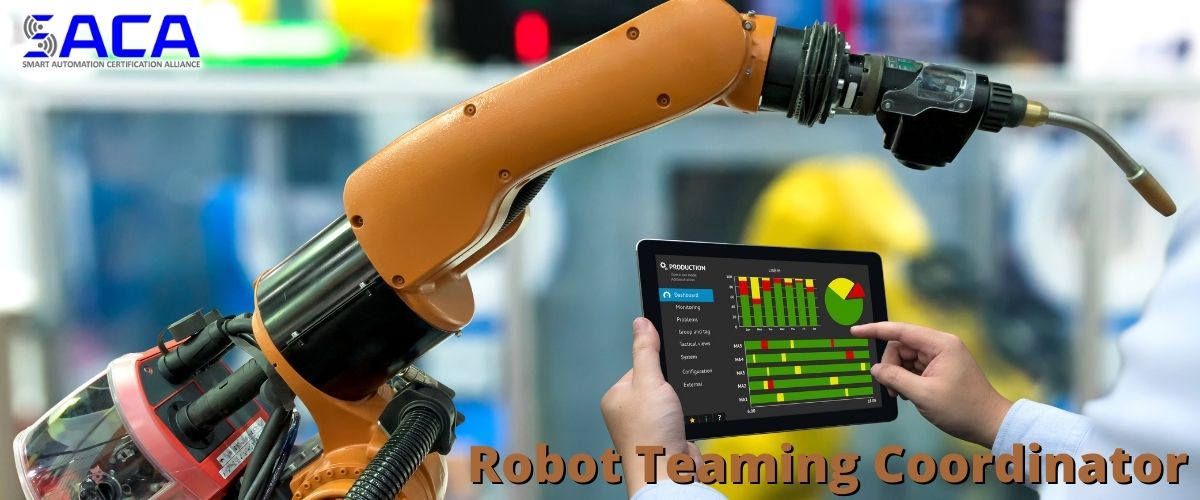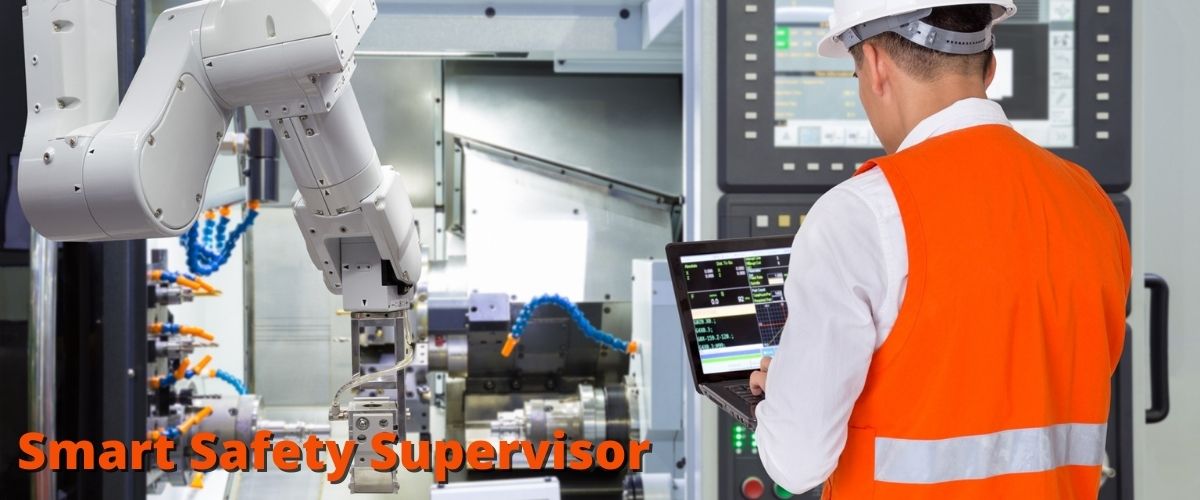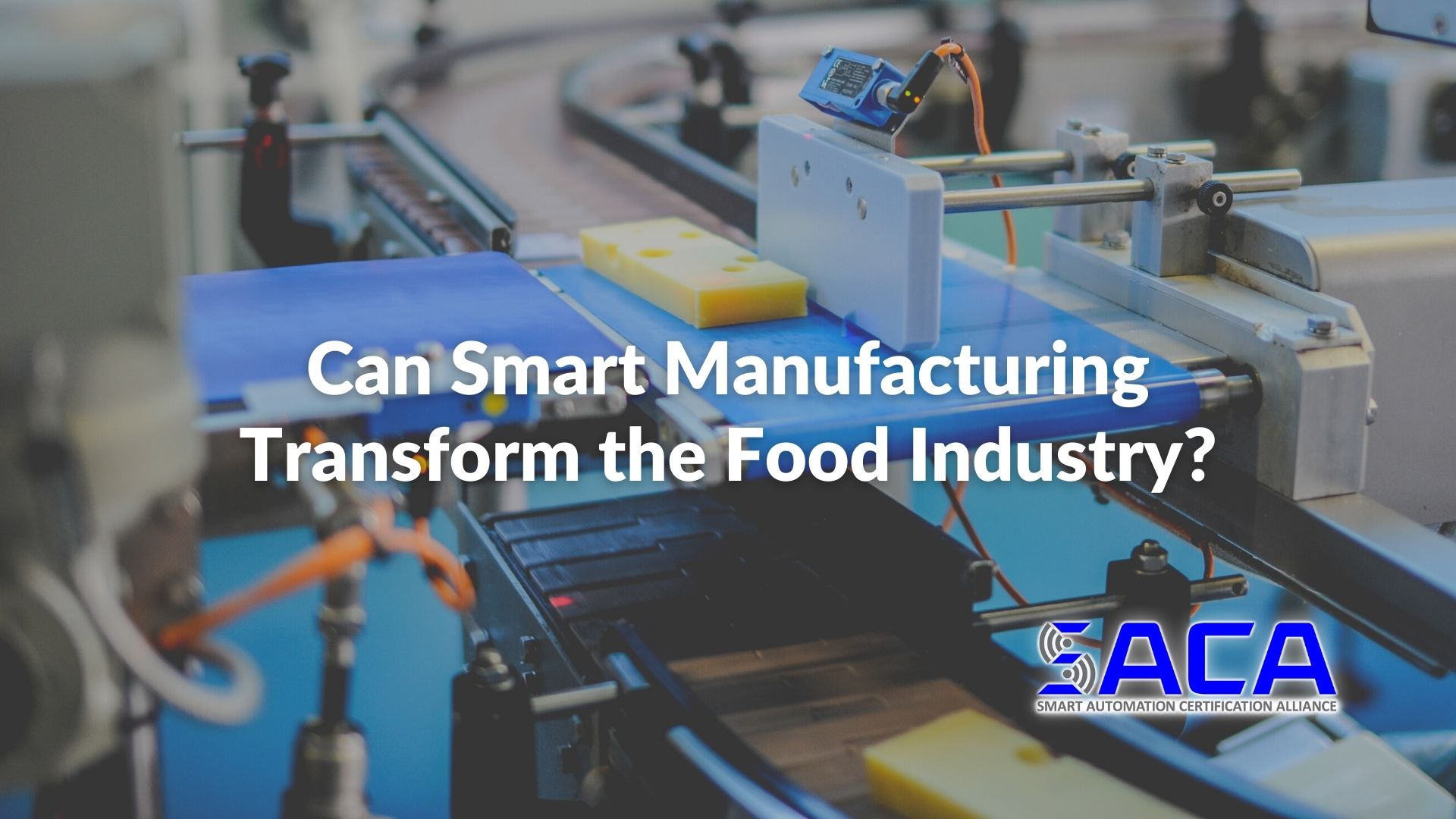Can Smart Manufacturing Transform the Food Industry?
What types of products do you buy online? Today, the answer to that question for many people is just about anything and everything. Things haven’t always been that way, though.
In the earliest days of e-commerce, consumers got their feet wet in the online marketplace purchasing products that were known quantities that could be shipped safely and cheaply. More personal items, such as clothing and shoes, retained a foothold in brick-and-mortar stores where customers could try things on to ensure a good fit.
Fast forward to today and it’s easy to see how drastically e-commerce has changed the retail landscape. Some people now purchase all of their goods exclusively online. There are still certain areas, though, where e-commerce has been slow to gain traction. For example, the food industry has yet to replace a trip to the grocery store with an online experience…until recently.
The COVID-19 pandemic changed much about how we live our lives, including that once-simple trip to the grocery store. Now, more and more people are doing their grocery shopping online or via a smartphone app and having their groceries delivered directly to their car at the store.
As a result, the food industry finds itself in need of a transformation to respond to changing realities driven by consumer demand. Experts believe that transformation will come through a variety of new smart manufacturing technologies.
Consumer Demand Driving Changes
When the COVID-19 pandemic began in early 2020, no one fully understood the ways in which our lives would change over the course of the coming months. Routine, everyday tasks, such as shopping for groceries, were suddenly fraught with the potential for exposure to the deadly virus.
Retail grocers were faced with simultaneously managing intense supply chain disruptions that left many shelves bare and customers who wanted as little contact with other shoppers as possible. The solution for many was to pair online shopping (often via an app) with curbside delivery.
Shopping for food online was a new experience for most customers. It didn’t take long, however, for most people to figure out that they could compare prices across various stores just like they would for any other online purchase.
The effect of these changes on the food industry has been significant. As author Katy Askew notes in a recent FoodNavigator article, the food industry is being forced “to rapidly adapt their processes and products to keep up with changing markets” resulting from “elevated consumer expectations.”
Smart Manufacturing to the Rescue
How can food and beverage companies keep up with these rapid changes? Askew spoke with Andrew Smith, Regional Segment Leader – Process & Packaging OEMs at Rockwell Automation, which recently became a Platinum Member of the Smart Automation Certification Alliance (SACA).
According to Smith, “To remain competitive, food and beverage manufacturing systems must optimize productivity and perform at the highest standard. This requires comprehensive and continuous operations improvement.” Increasingly, the food industry is turning to smart manufacturing to achieve those goals.
Smith believes in the potential of smart manufacturing:
“Connected, information-enabled manufacturing – or smart manufacturing – can make all the difference. New technologies are helping food and beverage manufacturers better understand and use their food processing operations. Smart manufacturing can help improve asset utilization, increase yield, drive workforce productivity, optimize resource management, and mitigate security risks.”
Not convinced yet? Smith points to Hillshire Brands as a prime example of what smart manufacturing can do. After the company began using a manufacturing intelligence system at a Texas plant, “the food manufacturer reduced inedible product and waste goals to 0.8% – saving about 5.5 million corn dogs per year.”
Technologies Changing the Game
The impact of smart technologies is not lost on the average person today. Whether it’s the smartphone in your hand or the smart thermostat keeping your home the perfect temperature, nearly every aspect of life has been impacted by advances in technology
Modern manufacturers are no exception, including food and beverage companies. According to Smith, “New developments in technology are redefining food and beverage manufacturing. By combining the Internet of Things, wireless and mobile technologies, data analytics, and network infrastructure, companies can access and act on the data from their operations before a potential problem arises.”
Askew notes in her article that Smith identified five advanced technologies he believes will drive greater adoption of smart manufacturing technologies in the food industry:
Flexible Manufacturing
Flexible manufacturing focuses on how quickly a company can adapt to change. As Matt Graves and Rachel Wilson explain in an article on the Rockwell Automation blog, “It’s about creating a seamless flow from need to delivery. True flexibility empowers manufacturers to stay in tune with their market, by replacing rigid and static operating models with levels of control and responsiveness never previously thought possible.”
When it comes to integrating new technologies, though, the authors stress that companies must not forget about the people using those technologies:
“When it comes to embracing Industry 4.0, integration between departments is key. While new technology can bring data and systems together, getting your people to communicate/collaborate is just as important – and absolutely essential if you want to gain the maximum return on investment.”
Augmented Reality
As Askew notes in her article, “Augmented reality (AR) is a technology that allows users to view and interact with real-world environments through computer generated superimposed images. It enables workers to perform better and avoid safety and compliance risks by providing easy access to the information they need online.”
In smart manufacturing, companies use AR to help technicians troubleshoot problems in real time. For example, maintenance personnel can use an AR app on a smartphone or tablet to zero in on exactly what component of a machine may be malfunctioning and develop a solution more quickly, thereby reducing equipment downtime.
Predictive Maintenance
The heart of smart manufacturing is the collection, processing, analysis, and application of the tremendous amounts of data (sometimes called “big data”) generated by the production process. According to Askew, companies will use “powerful machine learning algorithms and predictive analytics software to offer predictive and prescriptive maintenance.”
Practically, this means that machines equipped with smart sensors can monitor their own performance. Technicians will receive alerts from machines when maintenance needs are imminent, allowing them to maintain and repair equipment before breakdowns occur, thereby reducing downtime and increasing productivity.
Edge Computing
A Rockwell Automation article explains edge computing in this way:
“Edge computing combines a machine’s control and computing hardware into one platform, either with a controller that has a built-in computer or with a computing module that sits on the same rack as the controller. With this two-in-one approach, you can put all your machine’s digital content — such as custom code, the controller’s human-machine interface (HMI) application and any third-party software programs — right where the controller resides, rather than in another location. This creates inherent benefits for end users, including space savings and access to data right at its source. But it also creates new opportunities for you to build entirely new solutions for production applications.”
According to Askew, “Edge computing will complement existing cloud infrastructure by enabling real-time data processing where work is done (for example, motors, pumps, generators, or other sensors). Implementing integrated analytics from the edge to the cloud will help these companies maximize the value of investments in digital systems.”
Digital Twin/Digital Thread
In addition to augmented reality apps, companies are also using advanced digital tools to assist with troubleshooting, such as digital twins and the Digital Thread. According to Askew, a digital twin is “the collection of data created in software representing a real-life system. Machines, controllers, processes, workflow, and any other aspect of a system can be represented digitally, without any interruption to ongoing activities.”
Similar to a digital twin, the Digital Thread “creates a virtual representation of how data travels within a company. The Digital Thread enables supervisory enhancements throughout the supply chain, including delivery of work instructions to operators, quality control sampling, and automated activation of components and materials from vendors, suppliers, and partners”
What can these technologies do for the food industry? Askew paints an interesting view of a future that’s probably a lot closer than we think:
“In the near future, we will see that by interconnecting business systems through the Digital Thread, companies will practically start up new production lines. Using the digital twins, manufacturers will run machines virtually before parts are ordered, discover control issues before support personnel review them, predict future performance challenges and opportunities, simulate line changes to stay keep up with changing customer demands, and will train new staff in non-stop systems of activity.”
SACA Certifications Validate Industry 4.0 Skills
Employees in the food and beverage industry would do well to complement their current skillset with advanced Industry 4.0 skills that will help them change and grow with advances in technology. For those workers wanting to specialize in Industry 4.0 technologies, the certifications offered by the Smart Automation Certification Alliance are a great place to start. SACA offers industry-standard certifications that focus on “connected systems” skills. To learn more about the different types of SACA certifications, visit SACA online.
- Published in News
Top 5 Future Smart Automation Careers in Manufacturing
Oh, how five years can change things.
Turning the clock back all the way to 2015, gasoline had fallen under $3 nationally for the first time in four years, NASA was confirming the presence of water on Mars, and the smash-play Hamilton was the hottest ticket on Earth (you know, back when we could still go to concerts…).
Even manufacturing of those times now feels slightly antiquated. Promises of big data driving efficiency and predictive maintenance technologies, which were introduced on a national scale in 2015, are now commonplace around Smart Factories. Today, more efficient strategies are practiced by companies, leading to a manufacturing boom – another prediction-come-true from 2015.
While we could spend time reminiscing about the “ol’ days”, innovation doesn’t take a break. With more products being created daily than we’ve ever experienced before, it only makes sense for manufacturing to keep focused on improving production for future endeavors.
And it begs the question: where do we see manufacturing five years from now? Based on its history, changes are expected, according to Deloitte. Specifically, they predict several important themes will be reflected in these changes, including:
- Putting Humans in the Loop: Organizations are working harder to keep humans in the loop, such as rethinking work architecture, retraining people, and rearranging the organization to leverage technology. The hope is to not only eliminate routine tasks and cut costs, but create value for the customers (and meaningful work for the employees).
- Expanding Digital and “Soft” Skills: Despite the rise of automation, and technology replacing many mundane tasks, manufacturing requires human workers to ensure that everything runs smoothly. The essential human skills deemed most useful over the next decade include critical thinking, creativity, and people management.
- Leveraging the Digital Toolbox: Manufacturing workers are becoming more reliant upon digital tools, such as collaboration platforms, work-based social media, and instant messaging, to effectively complete their work.
In addition to these themes, Deloitte also anticipates five future skillsets that each manufacturing worker should possess, including being proficient in: Technology / Computer, Emerging Digital Technologies, Programming for Robots / Automation, Working with Tools and Technology, and Critical Thinking.
So how can these themes and skills work in combination to create future jobs?
According to Deloitte:
“As digital transformation and the Fourth Industrial Revolution continue to redefine manufacturing jobs of the future, leaders and workers alike need to embrace a work environment that is expected to blend advanced technology and digital skills with uniquely human skills, to yield the highest level of productivity. Understanding how work might change can help the industry as a whole prepare for a future that promises to be transformative.”
With that transformative future comes a new onslaught of smart careers – many of which have been created as a direct correlation to the ever-changing industry. In this article, we will highlight five of the jobs that Deloitte has tabbed as the most promising future smart automation careers in manufacturing, as well as what that position could potentially look like.
Job #1 – Digital Twin Engineer

SUMMARY: A digital twin engineer creates a virtual representation of both the physical elements, as well as the dynamics of how an IoT-connected product operates and interacts. Simply put, a digital twin engineer makes it possible to virtually see inside any physical asset, system, or structure to optimize design, monitor performance, predict maintenance, and improve the overall experience.
Used throughout a wide range of industries, digital twin engineers rely upon their engineering tooling to integrate necessary digital elements to produce the high-quality product. In addition, they act as a working link between the product twin and the performance twin, which can help enhance collaboration with customers, accelerate innovation, design smarter products, and create new services.
RESPONSIBILITIES: Using 3D software and simulations, a digital twin engineer will create digital twins to measure product performance throughout a variety of conditions. The insights discovered through the data help design new products and business models. Engineers also use machine learning, real-time usage, and performance data to optimize product performance and service.
SKILLS NEEDED: In creating virtual replicas of major industrial products, as well as helping companies predict and respond to customer problems using real-time data analysis, digital twin engineers need to be well-versed in simulations, analytics, and software development. Systems engineering, as well as research and development, are also critical.
Job #2 – Smart Factory Manager

SUMMARY: A smart factory manager is a jack-of-all-trades, so to speak. From production and quality, to IT and cyber responsibilities, a smart factory manager takes on an expanded, and often times unique, role of integrating advanced manufacturing, securing connectivity, and understand data analytics to drive a new level of overall equipment effectiveness, or OEE.
The goal of the smart factory manager is to identify data patterns that can help predict quality issues, as well as direct actions in response to these insights. In addition, they will leverage predictive maintenance analytics to identify issues before they happen, and direct preventative maintenance to address future issues.
RESPONSIBILITIES: A smart factory manager must be able to identify and aid in the addition of advanced technologies that enable self-optimization. They must be able to build a variety of automated manufacturing capabilities, such as robot cutting, 3D printing, and more. Finally, they are responsible for managing the installation, operations, and maintenance of all levels of the smart factory solutions “stack” that delivers continuous connectedness and ensures cybersecurity protocols are followed.
SKILLS NEEDED: Being skilled in applied technology, automation, and connectedness are a must for smart factory managers. In addition, operational excellence, deep learning, and innovation are also key to finding success in the field. Digital prototyping and client management are also plusses.
Job #3 – Robot Teaming Coordinator

SUMMARY: With increased automation comes a larger need for robots. And robots, like any other industrial component, needs to be able to effectively perform its predetermined tasks. As a Robot Teaming Coordinator (RTC), it is their task to oversee robots that interact with humans to enable a human rapport with robots, ensuring optimal human-machine interactions.
Generally, the RTC is responsible for monitoring robot performance, and giving feedback to programmers to perfect robot value. However unlike robot programmers, a robot teaming coordinator are often not experts in programming languages, but should have the knowledge to understand how robots are supposed to behave in work environments.
RESPONSIBILITIES: In addition to observing and evaluating robot performance, an RTC is responsible for sharing its feedback with robot programmers, recommending areas for improvement. They will train human team members to help them work more collaboratively with robots, as well as work in tandem with robot coordinators from other departments to identify opportunities to enhance productivity. Finally, all of those results are delivered against key performance indicators to view overall customer experience, improvements in productivity, and more.
SKILLS NEEDED: An RTC needs to be proficient in robot behavioral analysis by enabling a collaborative human-robot working environment, which applies a mixture of digital, social, and human skills to help humans and robots leverage each other’s strengths and improve productivity. This means a robot teaming coordinator needs to be well-versed in human-machine collaboration, as well as robot management.
Job #4 – Smart Safety Supervisor

SUMMARY: In most workplace environments, safety is the number one concern. That’s no different in a Smart Factory – only this time, it’s the Smart Safety Supervisor who is responsible for overseeing proper safety procedures are being utilized. A Smart Safety Supervisor works with operational, logistics, and technology teams to ensure safety, as well as finding new synergies that can improve the safety of workplaces.
With Smart Factories dealing with autonomous equipment, unmanned drones, and advanced materials, a Smart Safety Supervisor needs to be fluent in advanced technologies, and match those applications – such as smart helmets or augmented reality (AR) glasses to help create a safe and efficient work site. They will also use their broad knowledge of regulations, Environment, Health & Safety (EHS) standards, and available technologies to help companies develop technology implementation road maps, or help leverage the digital twin of a construction site to oversee health and safety of workers and machines.
RESPONSIBILITIES: When it comes to keeping workers safe, a Smart Safety Supervisor has a laundry list of responsibilities. From identifying new technologies to meet set safety targets, to formulating safety procedures and plans to reduce potential safety hazards, a Smart Safety Supervisor will be responsible for taking all of the necessary steps to ensure workplace safety. The job also includes incorporating specialized risk management principles between machines and humans, supervising safety specialists, and acting as a field safety inspector on incident investigations.
SKILLS NEEDED: The most necessary skill is having an advanced working knowledge of construction safety, safety management systems, and occupation and health regulations. Smart Safety Supervisors are skilled in EHS, workplace inspection, and risk assessment, as well as understanding digital tools and technologies to aid in keeping everyone safe. Finally, having experience developing and implementing multiple health and safety programs for various projects is a plus.
Job #5 – Smart QA Manager

SUMMARY: A “smart quality assurance (QA) manager” manages product quality using digital technologies. That means a smart QA manager will oversee an ecosystem of machines and work center sensors, artificial intelligence (AI), and virtual reality (VR) support technologies to proactively detect quality escapes and machine maintenance issues, as well as develop solutions to address those root causes of quality issues.
From developing requirements for AI and machine-learning (ML) algorithms that identify products defects as early as possible, to reducing the number of defects per part produced, the main task of a smart QA manager is to minimizes production downtime, and maximize productivity by reducing manual inspection.
RESPONSIBILITIES: A smart QA manager will be looked upon to work with the facility manager to develop and maintain the production schedule, as well as plotting historical data to develop predictive quality controls and detection algorithms. In addition, they will be responsible for conducting quality issues root cause analysis, providing corrective actions, and identifying new technologies to incorporate into QA systems.
SKILLS NEEDED: An experienced QA manager is trained in leveraging smart technologies to reduce the number of defects per part produced, with goals to enhance overall productivity. Other useful skills include operational excellence, innovation, automation, and digital prototyping. Like all future smart positions, it also requires a passion for deep learning.
Need Help Certifying Your Workforce for Smart Automation? Consider SACA!

With all of these future careers on the horizon, industry-endorsed Industry 4.0 certifications will become even more valuable. That’s why the Smart Automation Certification Alliance (SACA), a non-profit organization, has made it our mission to develop and deploy Smart Certifications for a wide range of industries.
Thanks to the help of our partners, SACA has created certifications that are industry-driven, developed for industry by industry. They are developed through a rigorous process that begins with the creation of truly international skill standards, endorsed by leading experts in Industry 4.0 technologies throughout the world.
SACA’s Smart Automation certifications use a modular structure to enable them to fit a wide range of individual needs, industries, and educational environments, and are available in three categories – Associate, Specialist, and Professional. Each certification is stackable, allowing individuals to start with one certification and add other certifications to customize their documented skills.
All SACA certifications are occupationally focused, so they prepare individuals for specific careers in the world of Industry 4.0. If you would like more information into SACA’s world-class Smart Certifications, please visit our website!
- Published in News




